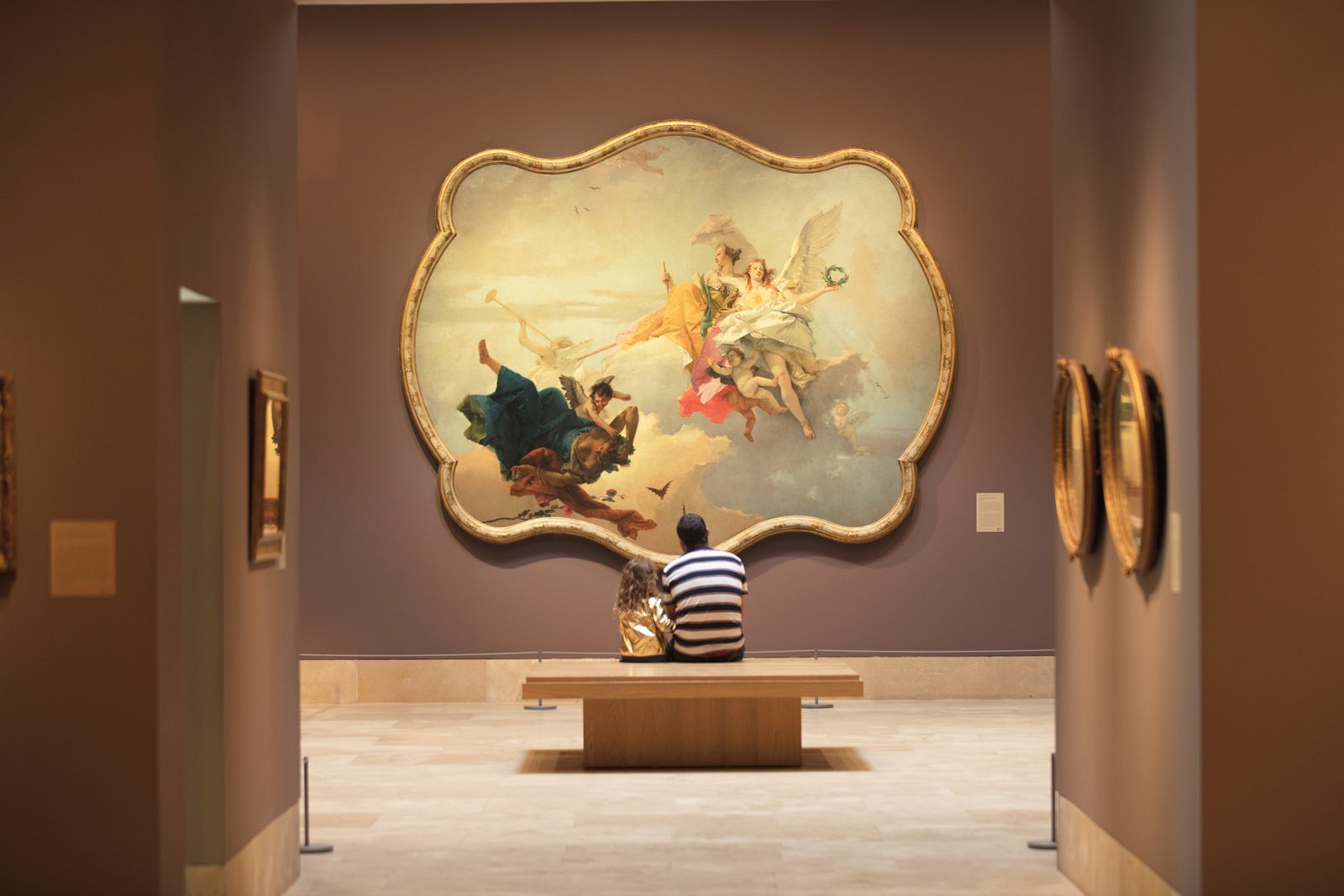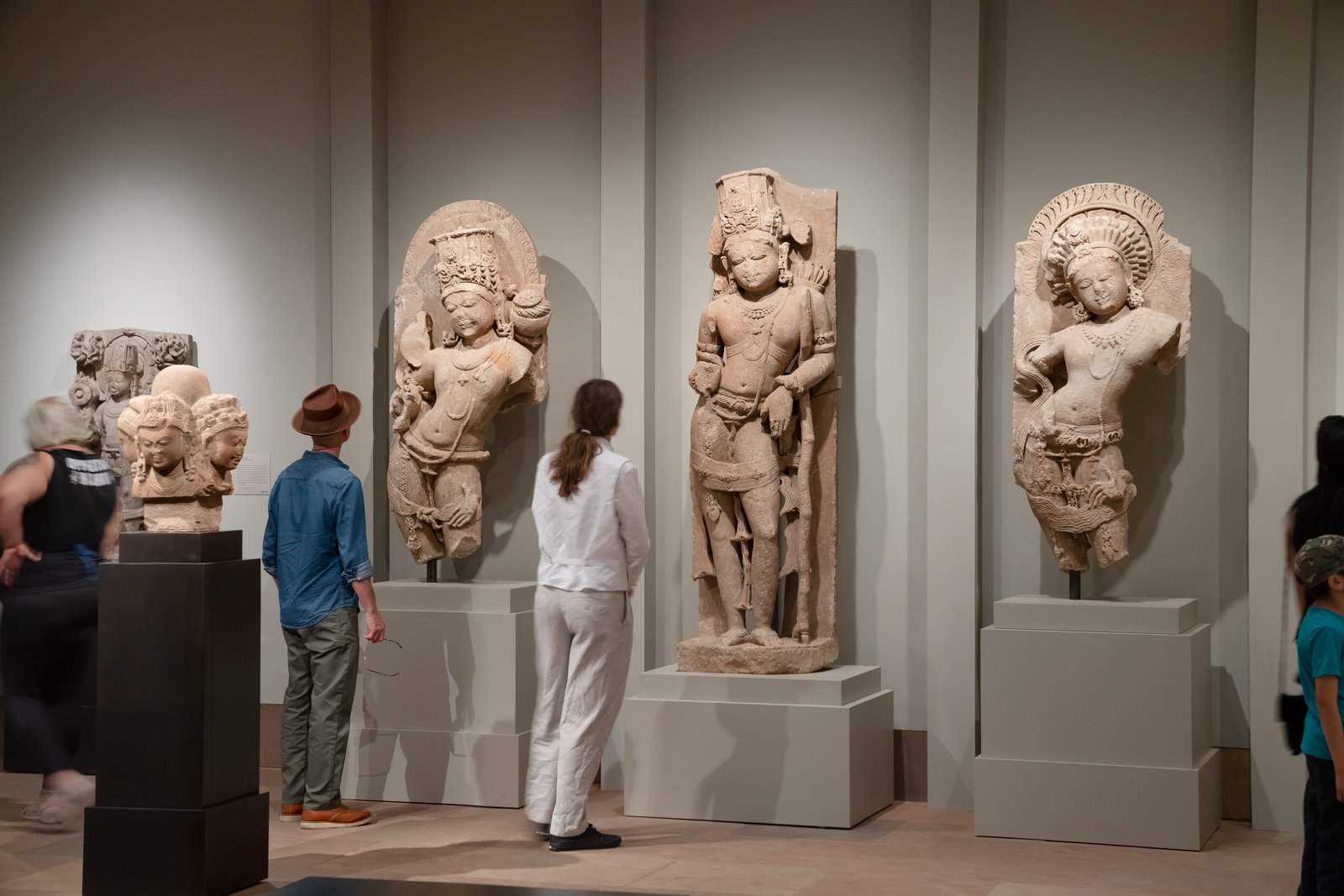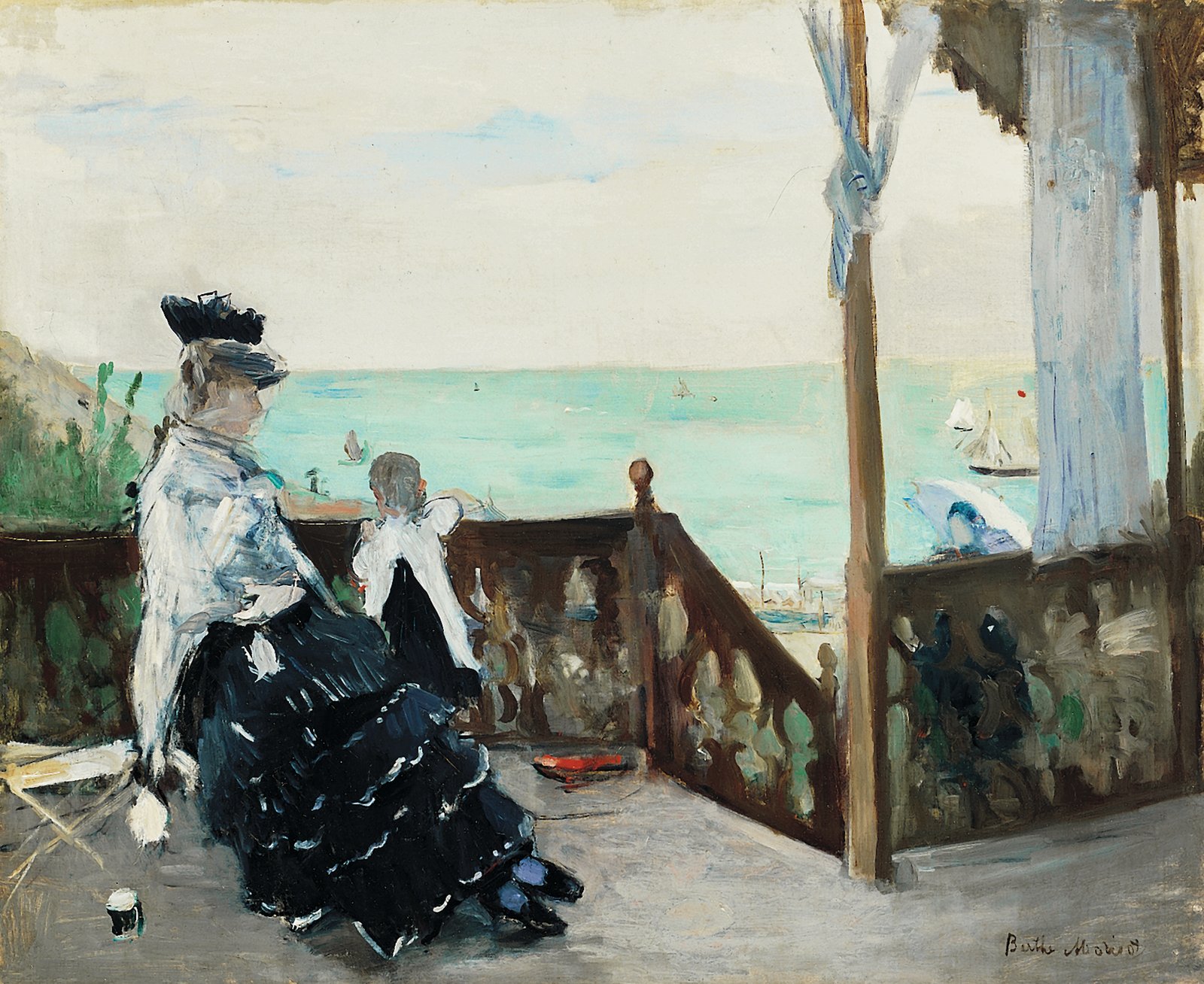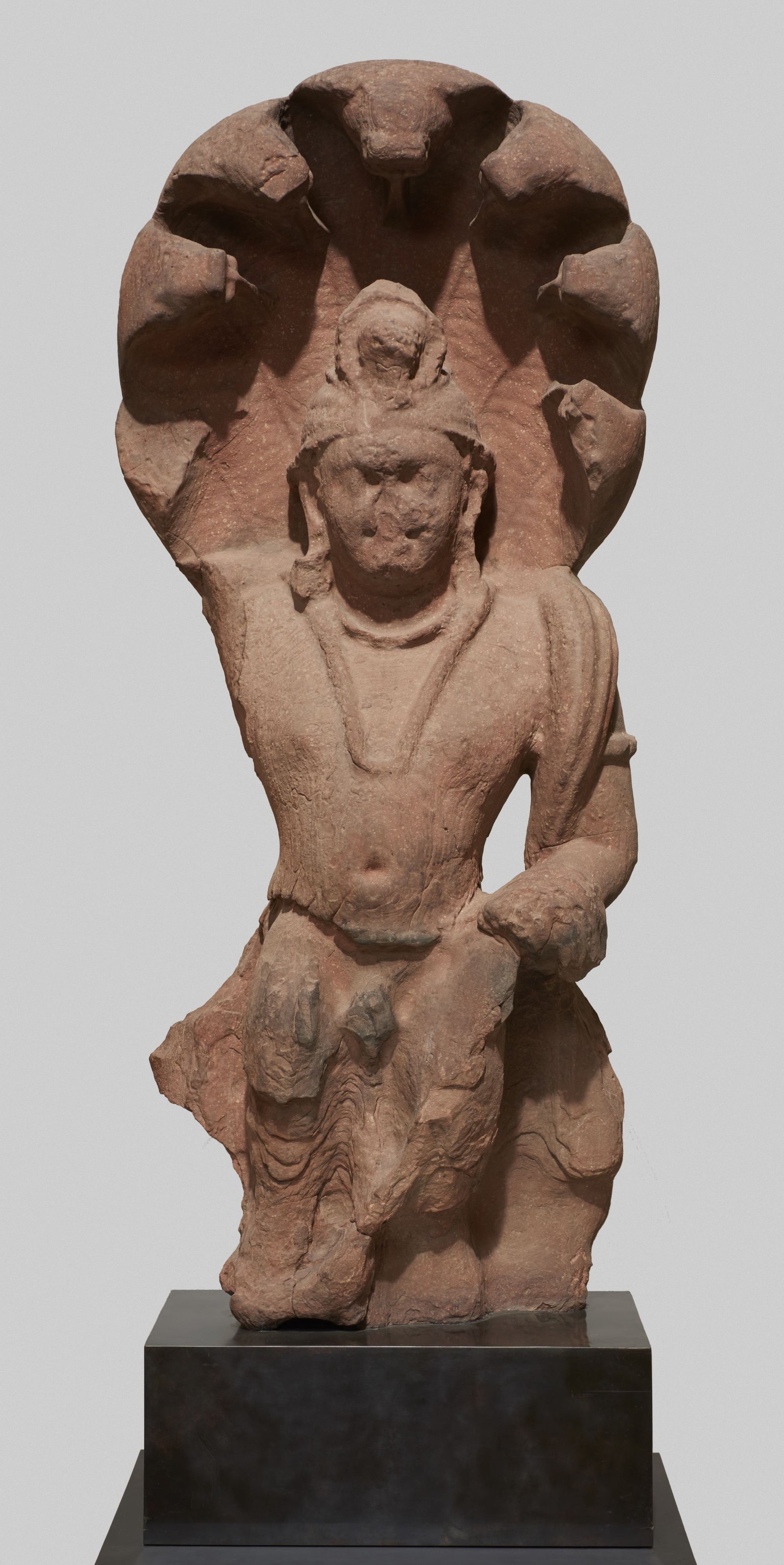Norton Simon: an American artist visits LA’s crown jewel
An essential introduction to Norton Simon, masterful art collector during America’s mid-century cultural emergence
“Los Angeles exists at the end of the world,” a prominent art dealer told me over an early evening meal at a chic, new cafe on Melrose this past December. The irony was not lost on me as I balanced a luxurious spread of verdant parsley salsa, bright citrus, olive oil, toasted hazelnuts, and anchovies on a slice of buttered sourdough bread. Savoring the intense flavors on my plate, I contemplated apocalyptic scenarios tied to the region—droughts, wildfires, landslides, and the ever present threat of earthquakes. But to what end did he refer? My companion relished in the ambiguity of his statement, abruptly turning the conversation to California’s exceptional produce, his favorite emerging galleries, the world class museums, and his contentment in having established permanent roots in the city. Obviously pleased with his koan-like offering of contradictions, he smiled. I came to understand that, in this particular instance, the “end of the world” refers to the last metropolitan time zone before the vast expanse of the Pacific Ocean, and to the temporal-spatial divide between the artworld in Europe and Los Angeles. Reflecting on his words, I considered my recent visit to the Norton Simon Museum, and the ambitious, complicated, brilliant businessman and art collector whose name it bears, as well as the westward expansion of arts and culture to Los Angeles over the last century.
Norton Winfred Simon was born in Portland, Oregon in 1907 and began his life on the outskirts of culture in this distant Northwestern corner of the United States. His parents, the children of Eastern European Jewish immigrants, had established a middle-class life for their children in the States. Norton, the eldest of his siblings with two younger sisters, faced a tragic loss when their mother passed away prematurely leaving a void which he struggled to fill throughout his life. At 16 years old, the children moved to San Francisco to live with their aunt. Despite enrolling at the University of California at Berkeley at his father’s insistence, Norton’s academic journey was cut short. During the Great Depression, which gravely affected his father’s retail business, Norton forged his own path in the world.
Contrary to his father’s wishes, he dropped out of school at Berkeley and, having wisely invested a small amount of money before the market crash, took advantage of an opportunity to acquire a bankrupt juice bottling plant just southeast of Los Angeles in Fullerton, California in 1927. His subsequent move to Southern California at the age of 24 to revive this struggling business and transform it into Val Vita Food Products Company marked a pivotal moment in his life. Norton achieved significant success early in his career, generating a substantial profit of $9 million from 1934 to 1942. His assets would increase exponentially throughout his life, acquiring and selling off countless enterprises at a profit, eventually merging Val Vita Food Products with Hunt’s Foods, and maintaining a stake in the company until retiring in 1969. For the remainder of his life, having left his indelible mark on the corporate landscape, he became a fierce advocate for arts and education in Southern California.

According to the journalist, Suzanne Muchnic, who interviewed Simon later in his life, and with the blessing of Simon’s wife, Jennie Jones Simon, penned his definitive biography titled, “Odd Man In: Norton Simon and the Pursuit of Culture”, published posthumously in 1998, “He needed a new challenge after he made a fortune in his early adulthood and had grown weary of running a corporate empire. Buying art and learning about every aspect of it, as well as its market, provided him with a reason to acquire an entirely new body of knowledge. Collecting art also gave Simon the satisfaction of using an outsider’s tactics to become an insider, just as he done in business. He always had something to prove, and it was fundamentally, that an uneducated Jewish renegade from modest circumstances could rise to the pinnacle of influence and power in his chosen fields.” Entering the game of art collecting later in life, Norton Simon, a maverick with boundless energy and a chip on his shoulder, strategically leveraged his position at “the end of the world” to exert pressure on dealers in New York well beyond business hours and had no qualms about bothering a conservator at the Louvre about the condition of a painting he wanted, or seeking out a winning bid at auction just before midnight in a London evening sale.
From a cultural perspective, and in contrast to the centuries-old art museums of Europe and New York, Los Angeles remained a relatively young city even into the 1950s. Besides the well-established British painting collection at the Huntington Library and Botanical Gardens, there were no institutions dedicated solely to art. In a sudden rush to establish a cultural and artistic hub in the United States west of Chicago, numerous industrialists and titans of business, including William Randolph Hearst, Armand Hammer and J. Paul Getty, vied for roles as board members, private lenders, and as influential politicians shaping nascent taxpayer-funded institutions, hoping to stamp their names on the new wings as they were constructed. This movement began with the inception of the Los Angeles County Museum of Art in 1961, spearheaded in large part by Norman Simon who would lend a significant swath of his collection to LACMA in the years before he established a museum of his own in the 1970s.

On an unusually hot December afternoon, dust kicks up from our car’s tires as we head over the Colorado Street bridge and across the Arroyo Seco river valley toward the historically conservative enclave of Pasadena. Arriving at the tree lined and well-manicured parking lot there is a patrician and stately air. A sense of enduring prestige pervades the entryway, dotted with sculptures by Rodin, all seemingly at odds with Simon’s reputation as a perpetual outsider who challenged the artworld status quo for over three decades. The curving tiled facade of the modern building which now houses the collection amassed by Simon, and his various foundations, once belonged to the Pasadena Art Museum. It was appropriated in a bail-out, happily funded by Simon in 1969, which granted the lion’s share of the museum’s square footage for displaying his collection and provided access to the Galka Scheyer Blue Four Collection—over 400 artworks which were gifted to the Pasadena Art Museum before the merger. By 1975, after a much-needed renovation of the building on Simon’s dime, the museum became known as the Norton Simon Museum from that point onward. Ongoing, passionate stewardship of the collection and the sculpture garden has secured Norton Simon’s legacy in Southern California, while time has smoothed some of the rough edges of the past. In fact, many Angelenos I spoke to described the museum as a crown jewel in the cultural landscape of their city. The collection comprises 12,000 art objects spanning a 2,500 year history, from ancient art and objects of South and Southeast Asia, significant Renaissance masterworks, to Impressionist, Post-impressionist and 20th century painting and sculpture.
Simon’s first love was Impressionism, which he purchased en masse in the 1950s beginning with Renoir, Degas, and Gauguin, expanding his collection of 19th century French painting throughout his lifetime. Berthe Morisot’s “In a Villa at The Seaside” from 1847 is a particularly arresting piece by one of the few female Impressionists to exhibit their work at the Salon. The wispy and sketch-like brushwork of the veiled seated figure, contrasting with flat planes of grey sky and the placid seascape in the distance, create a dynamic visual tension in an otherwise private, familial scene. Meanwhile, the architectural details in the railing to the right of the figures are literally shot through with atmospheric bolts of color, characteristic of the Impressionist’s bold depictions of chromatic light and its faceted properties.

Of the notable Renaissance works in the collection, Giovanni di Paolo’s, “The Branchini Madonna”, a Sienese altarpiece from 1427, acquired in 1978 by the Norton Simon Foundation, takes pride of place in the subdued skylit galleries dedicated to art from the 14th-16th centuries. A pivotal piece by the 24 year old artist, it employs thin glazes of oil over gold leaf to create the stunningly precise geometric halos on the Madonna and Christ. In other areas, such as the red and yellow dress on the Madonna, the sgraffito technique of layering opaque oil over gold leaf and scratching away the paint to reveal the layers below, is used to great effect, and also comprises the flowers and foliage on the bottom portion of the painting, giving them a richly textured appearance. The azurite and lapis lazuli robes of the Madonna were recently restored by the conservators and are resplendent to behold. Incredibly, it is the very first painting on panel attributed to the artist, who was trained in the art of illuminated manuscripts before being commissioned for the altarpiece at the Church of San Domenico.

After a honeymoon with his second wife in India 1971, Simon’s focus in collecting shifted from Old Masters and Impressionism to the art of South and Southeast Asia. Beneath a skylit oculus nestled within the sweeping white walls of the grand staircase leading to the lower level of the museum dedicated to Eastern Art, sits a 1st century sandstone Serpent Deity (Nagaraja) worn smooth by time. It is one of the oldest works on display and its monumental scale, augmented by the damages it has sustained, seemingly shedding its layers before our eyes, highlights the regenerative qualities of this serpent hood which peers over the deity’s head. Also on view during my visit on the lower level is “Benevolent Beings: Buddhas and Bodhisattvas from South and Southeast Asia” through February 19th, 2024.

In the 1950s, when Simon began acquiring art, he found himself in the right place at the right time, significantly impacting the cultural landscape of southern California. His pivotal role in establishing the Los Angeles County Museum of Art, taking over the Pasadena Art Museum (indirectly leading to the creation of the Museum of Contemporary Art), and his enduring partnership with the J. Paul Getty Trust, profoundly shaped the growth and development of art museums in greater Los Angeles. When contemplating Simon’s unparalleled collection within the context of the institutions he influenced over three decades, it becomes evident that he stands alone without peers. Observing his collection and legacy from a contemporary standpoint, Simon’s words assume a sage-like resonance, “In today’s world where often scientific development is regarded as the highest goal and where the individual frequently feels alienated from himself and those around him, the role of art becomes increasingly important in keeping open the lines of communication.”
Daniel Graham Loxton (b. 1987, Montclair, New Jersey, USA; lives and works in Cold Spring, New York) currently teaches painting and drawing at The State University of New York at New Paltz. Recent solo and two person exhibitions include, Daniel Graham Loxton: Living Room | Roy McMakin: Dining Room & Bedroom at CASTLE, Los Angeles, CA (2023); Shallow History at Louis Reed, New York, NY (2022); The Patron Saint of Turning at Claas Reiss, London, UK (2021); Pillow for Dürer at Jir Sandel, Copenhagen, DK (2021), which included a book of drawings by the artist and text by gallerist and curator Chris Sharp. Recent group exhibitions include, Renaissanstrasse at Envy6011, Wellington, NZ (2023); Seeds, Voids, and Tailored Cloth, CFAlive with Claas Reiss, Conceptual Fine Arts, Milan, Italy (2022); A Minor Constellation, Chris Sharp Gallery, Los Angeles, CA (2022)
January 18, 2024
